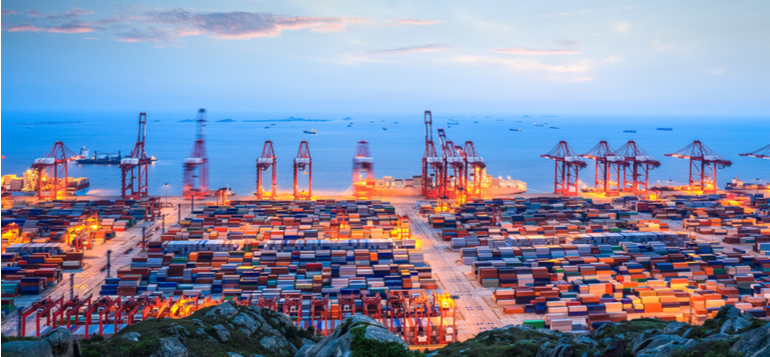The COVID-19 pandemic has caused significant disruptions to global trade as both manufacturing and demand for goods shrunk.
However, as trade plays a vital role in global economies, we can see the focus on recovery has led to the emergence of new trade trends that provide tremendous support for trade growth.
Global Trade Continues to Grow in 2021
Despite the slump brought on by COVID-19, the May 2021 Global Trade Update from The United Nations Conference on Trade and Development (UNCTAD) shows that global trade recovery reached a new high in the first quarter of 2021, growing by 10% YoY and 4% QoQ.
The growth in global trade is attributed to East Asian countries' high export performance since Q1 2021. The stringent restrictions they enforced early in the pandemic have allowed them to recover faster and capitalise on increasing worldwide demand for medical products.
Other reasons for global trade growth in 2021 include easing pandemic restrictions, increasing commodity prices, and trade protectionist policies.
As a result of entering the post-pandemic recovery, the following trends have emerged:
5 Trends for The Future of Global Trade
1. Digital Transformation and Automation
Due to tightened travel restrictions and social distancing measures, COVID-19 accelerated digital transformation over the past year. The decrease in human interaction due to the pandemic has driven advances in automation and artificial intelligence. Some key digital transformations utilised artificial intelligence for supply chain management and autonomous vehicles for logistics.
For more information on how technology has transformed trade, visit How are AI and Blockchain Changing Global Trade.
2. Increasing Prominence of Sustainability
While the pandemic has caused CO2 submission to subside, it was not enough to meet emissions targets. Global emissions would need to be cut by almost 8% every year for the next ten years to achieve the objectives set out in the Paris Agreement on climate change.
"Green recovery" will pressure global trade to invest in more ecologically friendly transportation and energy sources. Once the pandemic is under control globally, the threat of climate change will become the primary focus of the 21st century.
3. Supply Chain Transformation
When the pandemic started, the world experienced a supply shock as manufacturing in China came to a complete standstill. The limited supply combined with the urgent necessity for medical supplies and other essential goods caused a demand shock that contributed to the global economy collapsing, exposing the flaws in companies' production processes and supply chains. This made it necessary for the trade industry to identify their vulnerabilities, diversify their supply base and hold greater amounts of safety stock.
4. The Rise of Multilateralism
The COVID-19 pandemic has demonstrated where multilateralism – countries working together to pursue a common goal – has succeeded or failed.
According to the World Trade Organization, just one of the vaccines has 280 components from 19 different countries, a feat that would have been impossible without an efficient trade network. However, the vaccine rollout has exposed where the global community has fallen short. What should have been a significant economic stimulus for developing countries ended up widening the inequality gap.
To combat climate change and the COVID-19 pandemic, the US will be rebuilding foreign alliances and partnerships in 2021 and beyond.
5. The Rise of Protectionism
As the pandemic saw global supply chains break down, it comes with no surprise that global trade will become much more regional than before. Even before the pandemic, we saw a rise in regional trade, thanks to growing nationalism and grassroots initiatives to "buy local". The idea of expanding local supply chains gained even more traction due to the pandemic and will continue beyond it.
The Bottom Line
As pandemic restrictions begin to ease in 2021, global trade is rebounding and surpassing pre-pandemic levels. With trends like investments in technology and sustainability, we can see a paradigm shift that will aid sustainable global trade growth further into the 2020s.
For more information on how the pandemic has affected global trade and how to mitigate associated risks, read our comprehensive report on the future of trade.





